The global drug trade is controlled and run by the intelligence agencies CIA Mosaad MI5- MI6
James Casbolt has worked for MI6 'black ops' cocaine trafficking IRA Mossad – London & Brighton
http://iraqwar.mirror-world. ru/article/126995
MI6 (w. Mossad,CIA) Are The Lords Of The Global Drug Trade
By: Crack_Smoke_Republican on: 05.05.2007 [21:31 ] (718 reads)
|
Always treat the International Drug Trade and Drug Money Laundering as actual Terrorist Acts.
|
MI6 Are The Lords Of The Global Drug Trade
International Politics
Commentary by James Casbolt, Former MI6 Agent
2 May 2007
It may be a revelation to many people that the global drug trade is controlled and run by the intelligence agencies. In this global drug trade British intelligence reigns supreme. As intelligence insiders know MI5 and MI6 control many of the other intelligence agencies in the world (CIA, MOSSAD etc) in a vast web of intrigue and corruption that has its global power base in the city of London, the square mile.
My name is James Casbolt and I worked for MI6 in 'black ops' cocaine trafficking with the IRA and MOSSAD in London and Brighton between 1995 and 1999. My father Peter Casbolt was also MI6 and worked with the CIA and mafia in Rome, trafficking cocaine into Britain.
My experience was that the distinctions of all these groups became blurred until in the end we were all one international group working together for the same goals. We were puppets who had our strings pulled by global puppet masters based in the city of London. Most levels of the intelligence agencies are not loyal to the people of the country they are based in and see themselves as 'super national'. It had been proved beyond a shadow of a doubt that the CIA has been bringing in most of the drugs into America for the last fifty years (see ex LAPD officer Michael Rupert's 'From the wilderness' website for proof).
The CIA operates under orders from British intelligence and was created by British intelligence in 1947. The CIA today is still loyal to the international bankers based in the city of London and the global elite aristocratic families like the Rothchilds and the Windsor's. Since it was first started, MI6 has always brought drugs into Britain. They do not bring 'some' of the drugs into Britain but I would estimate MI6 bring in around ninety percent of the drugs in. They do this by pulling the strings of many organised crime and terrorist groups and these groups like the IRA are full of MI6 agents.
MI6 bring in heroin from the middle east, cocaine from south America and cannabis from morocco as well as other places. British intelligence also designed and created the drug LSD in the 1950's through places like the Tavistock Institute in London. By the 1960's MI5, MI6 and the CIA were using LSD as a weapon against the angry protestors of the sixties and turned them into 'flower children' who were too tripped out to organise a revolution. Dr Timothy Leary the LSD guru of the sixties was a CIA puppet. Funds and drugs for Leary's research came from the CIA and Leary says that Cord Meyer, the CIA agent in charge of funding the sixties LSD counter culture has "helped me to understand my political cultural role more clearly".
In 1998, I was sent 3000 LSD doses on blotting paper by MI5 with pictures of the European union flag on them. The MI5 man who sent them told my father this was a government 'signature' and this LSD was called 'Europa'.
This global drugs trade controlled by British intelligence is worth at least 500 billion a year. This is more than the global oil trade and the economy in Britain and America is totally dependent on this drug money.
Mafia crime boss John Gotti exposed the situation when asked in court if he was involved in drug trafficking. He replied"No we can't compete with the government".
I believe this was only a half truth because the mafia and the CIA are the same group at the upper levels.
In Britain, the MI6 drug money is laundered through the Bank of England, Barclays Bank and other household name companies.
The drug money is passed from account to account until its origins are lost in a huge web of transactions. The drug money comes out 'cleaner' but not totally clean.
Diamonds are then bought with this money from the corrupt diamond business families like the Oppenheimers. These diamonds are then sold and the drug money is clean. MI6 and the CIA are also responsible for the crack cocaine epidemic in Britain and America. In 1978, MI6 and the CIA were in south America researching the effects of the natives smoking 'basuco' cocaine paste. This has the same effect as crack cocaine. They saw that the strength and addiction potential was far greater than ordinary cocaine and created crack cocaine from the basuco formula. MI6 and the CIA then flooded Britain and America with crack. Two years later, in 1980, Britain and America were starting to see the first signs of the crack cocaine epidemic on the streets.
On August 23, 1987, in a rural community south of Little Rock in America, two teenage boys named Kevin Ives and Don Henry were murdered and dismembered after witnessing a CIA cocaine drop that was part of a CIA drug trafficking operation based at a small airport in Mena, Arkansas. Bill Clinton was the governor of Arkansas at the time. Bill Clinton was involved with the CIA at this time and $100 million worth of cocaine was coming through the Mena, Arkansas airport each month. For proof see the books 'Compromise' and 'Dope Inc'.
On my father's international MI6 drug runs, whatever fell off the back of the lorry so to speak he would keep and we would sell it in Britain. As long as my father was meeting the speedboats from Morocco in the Costa del Sol and then moving the lorry loads of cannabis through their MI6, IRA lorry business into Britain every month, British intelligence were happy. As long as my father was moving shipments of cocaine out of Rome every month, MI5 and MI6 were happy. If my father kept a bit to sell himself no one cared because there was enough drugs and money to go round in this 500 billion a year global drugs trade.
The ones who were really paying were the people addicted. Who were paying with suffering. But karma always catches up and both myself and my father became addicted to heroin in later years and my father died addicted, and poor in prison under very strange circumstances. Today, I am clean and drug-free and wish to help stop the untold suffering this global drugs trade causes.
The intelligence agencies have always used addictive drugs as a weapon against the masses to bring in their long term plan for a one world government, a one world police force designed to be NATO and a micro chipped population known as the New World Order. As the population is in a drug or alcohol-induced trance watching 'Coronation Street', the new world order is being crept in behind them. To properly expose this global intelligence run drugs trade we need to expose the key players in this area:...
Continue reading for "the names" below...
1. Tibor Rosenbaum — a MOSSAD agent and head of the Geneva based Banque du Credit international. This bank was the forerunner to the notorious Bank of Credit and Commerce international (BCCI) which is a major intelligence drug money laundering bank. 'Life' magazine exposed Rosenbaum's bank as a money launderer for the Meyer Lansky American organised crime family and Tibor Rosenbaum funded and supported 'Permindex' the MI6 assassination unit which was at the heart of the John F. Kennedy assassination.
2. Robert Vesco — sponsored by the Swiss branch of the Rothchilds and part of the American connection to the Medellin drug cartel in Columbia.
3. Sir Francis de Guingand — former head of British intelligence, now living in south Africa (and every head of MI5 and MI6 has been involved in the drug world before and after him).
4. Henry Keswick — chairman of Jardine Matheson which is one of the biggest drug trafficking operations in the world. His brother John Keswick is chairman of the bank of England.
5. Sir Martin Wakefield Jacomb — Bank of England director from 1987 to 1995, Barclays Bank Deputy Chairman in 1985, Telegraph newspapers director in 1986 (This is the reason why this can of worms doesn't get out in the mainstream media. The people who are perpetrating these crimes control most of the mainstream media. In America former director of the CIA William Casey is head of the council of the media network ABC. Many insiders refer to ABC as 'The CIA network.)
6. George Bush, Snr. — former President and former head of the CIA and America's leading drug baron who has fronted more wars on drugs than any other president, which in reality is just a method to eliminate competition. A whole book could be written on George Bush's involvement in the global drug trade but it is well-covered in the book 'Dark Alliance' by investigative journalist Gary Webb. Gary Webb was found dead with two gunshot wounds to the back of his head with a revolver. The case was declared a 'suicide'. You figure that out. Gary Webb as well as myself and other investigators, found that much of this 'black ops' drug money is being used to fund projects classified above top secret. These projects include the building and maintaining of deep level underground bases in Dulce in New Mexico, Pine gap in Australia, Snowy mountains in Australia, The Nyala range in Africa, west of Kindu in Africa, next to the Libyan border in Egypt, Mount Blanc in Switzerland, Narvik in Scandinavia, Gottland island in Sweden and many other places around the world (more about these underground bases in my next issue).
The information on this global drugs trade run by the intelligence agencies desperately needs to get out on a large scale. Any information, comments or feedback to help me with my work would be greatly welcomed.
James Casbolt- St Ives, Cornwall-02/5/07
E-mail jamescasbolt@hotmail.co.uk
http://www.friendsofliberty. com/modules.php?name=News& file=article&sid=3117
This is an old news, but yeah... GWB was snorting the very same coke his daddy was murdering people in South/Central America to harverst and ship to the US.
But again, my amazement is not with the degree of crimes of these NWO, part II folks, but rather with the idiocy of the US dweller. THat's where one's brain just stops. 911, 3000 murdered by own gov't. They don't fucking care. Oaklahoma.
Kids bombed by gov't, torn to shreds. They don't care. FBI stands down cops and lets some nutter kill 30 kids in some school. They don't care. The animal just doesn't care. I mean zebras and wildebeast care more about one another in the herd than yanks. This NWO monster keeps offing them for fun, on TV, make jokes about it, and they keep grazing like nothing's happening. Grazing on their diseased burger madcow swill and guzzling aspertame tainted cokes.
There can't be a dumber animal in the whole of the jungle than that.
...London and it's vast finance industry is the world largest money laundry machine.
Imagine a state becomes a criminal institutions and pretends to be justified by it's voters.
We need to introduce the fourth power the people, otherwise we have no stake.
The MI6, Mosad and CIA are just the mules that do the work BUT THE MONEY GOES TO ROYAL CEFFERS and to the Bush clan. The problem with USA people now IS THAT THEY LOST 100% THEIR FREEDOM TO THE POINT THAT THEY ARE SLAVES TO THEIR DEBT AND PAY CHEQUE!
They have no voice, no say, no thinking, no intelligent conversations or discussions. Because if they do THEY WILL LOSE THEIR JOB and therefore they will be in the black list of FBI. Their career will be over.
Long time ago I posted the concept of SLAVERY INDEX related to freedom of thinking. If you have deep pockets, you are at your own and can care less about conforming. Rothschild said if he can control the money he can care less about the law.
On the other hand, if you have nothing, then there is nothing more than you can lose. In fact biggest changes in human thinking seem to always come from clean-pocket people like Christ, Gandhi, and many others.
The other interesting group is the gypsies; they are no where in the tax radar and this is why Hitler killed them massively. Native people also are free to think because they are quite out of the consumer vicious circle. They have their own micro economy and a bartering system therefore they can care less about scam currencies. The problem for these societies though is that they do not have enough gun to defend their way of life.
In between these two extremes are those who must work to make a living by renting themselves out and therefore they must compromise their freedom by conforming to rules: starting with dressing code, behavior code, social style code and evolving into a complete surrender of your own social and political dreams and your own soul if you end up in the army, CIA, FBI! Therefore, as the USA society is based on consume beyond their means, their people are the most indebted people on earth and consequently the people that have lost most of their inner freedom.
Q.E.D.
Comments:
by poiuytr on 06.05.2007
This is an old news, but yeah... GWB was snorting the very same coke his daddy was murdering people in South/Central America to harverst and ship to the US.
But again, my amazement is not with the degree of crimes of these NWO, part II folks, but rather with the idiocy of the US dweller. THat's where one's brain
just stops. 911, 3000 murdered by own gov't. They don't fucking care. Oaklahoma. Kids bombed by gov't, torn to shreds. They don't care. FBI stands down cops
and lets some nutter kill 30 kids in some school. They don't care. The animal just doesn't care. I mean zebras and wildebeast care more about one another in the herd than yanks. This NWO monster keeps offing them for fun, on TV, make jokes about it, and they keep grazing like nothing's happening. Grazing
on their diseased burger madcow swill and guzzling aspertame tainted cokes. There can't be a dumber animal in the whole of the jungle than that...
by gmmonko on 06.05.2007
...London and it's vast finance industry is the world largest money laundry machine.
Imagine a state becomes a criminal institutions and pretends to be justified by it's voters.
We need to introduce the fourth power the people, otherwise we have no stake
but the money goes higher up to royalties! by CANUKISTAN_VIEW on 06.05.2007
The MI6, Mosad and CIA are just the mules that do the work BUT THE MONEY GOES TO ROYAL CEFFERS and to the Bush clan.
The problem with USA people now IS THAT THEY LOST 100% THEIR FREEDOM TO THE POINT THAT THEY ARE SLAVES TO THEIR DEBT AND PAY CHEQUE!
They have no voice, no say, no thinking, no intelligent conversations or discussions. Because if they do THEY WILL LOSE THEIR JOB and therefore they will be in the black list of FBI. Their career will be over.
Long time ago I posted the concept of SLAVERY INDEX related to freedom of thinking. If you have deep pockets, you are at your own and can care less about conforming. Rothschild said if he can control the money he can care less about the law.
On the other hand, if you have nothing, then there is nothing more than you can lose. In fact biggest changes in human thinking seem to always come from clean-pocket people like Christ, Gandhi, and many others.
The other interesting group is the gypsies; they are no where in the tax radar and this is why Hitler killed them massively. Native people also are free to think because they are quite out of the consumer vicious circle. They have their own micro economy and a bartering system therefore they can care less about scam currencies. The problem for these societies though is that they do not have enough gun to defend their way of life.
In between these two extremes are those who must work to make a living by renting themselves out and therefore they must compromise their freedom by conforming to rules: starting with dressing code, behavior code, social style code and evolving into a complete surrender of your own social and political dreams and your own soul if you end up in the army, CIA, FBI! Therefore, as the USA society is based on consume beyond their means, their people are the most indebted people on earth and consequently the people that have lost most of their inner freedom.
Q.E.D

Lieutenant General Sir Robert Fry
Lieutenant General Sir Robert Alan Fry KCB, CBE employed by MI5 and MI6 is Executive Chairman of the McKinney Rogers Group of companies. Before joining McKinney Rogers, Fry served over 30 years on military operations from Kosovo, the Gulf and Iraq and was later a Vice President of Hewlett Packard. He remains an advisor to HP and a number of other companies in the defense and banking sectors.
He is a member the Royal United Services Institute executive council and a trustee of Help for Heroes.
Early career
After taking a degree in economics at the University of Bath and working for a period in commerce in New York, Fry joined the Royal Marines in 1973.[1]
Attendance at the Army Staff College was followed by tours in the Ministry of Defence and Directorate of Special Forces, a sequence punctuated in the 1986/7 academic year when he studied for an MA (Distinction) in War Studies at King's College London.
Senior Military Career
In 1989, Fry was appointed Chief of staff, HQ 3 Commando Brigade and subsequently took part in Operation Haven in Northern Iraq. This was followed by a return to the Ministry of Defence before taking command of 45 Commando in 1995. In 1997, in the rank of brigadier, he became the Director Naval Staff in the Ministry of Defence, after which he took over command of 3 Commando Brigade in 1999 and deployed to Kosovo.[2]
He was also Director of Operations in the Ministry of Defence advising the prime minister on the military strategic direction of the UK’s response to the 11 September attacks.
He was appointed Commandant General Royal Marines in 2001;[3] a year later he took up the new and concurrent job of Commander United Kingdom Amphibious Forces, in which capacity he deployed as the UK Maritime Component Commander for operations in the Gulf, completing a novel double of command of both land and maritime forces at formation level.
He assumed the post of Chief of Staff at the Permanent Joint Headquarters in Northwood in May 2002 and remained in the job throughout the planning for and conduct of operations against Iraq. He took over the job of Deputy Chief of the Defence Staff (Commitments) in July 2003 and was deployed as Senior British Military Representative and Deputy Commanding General, Multinational Force, Iraq in March 2006.[4] He retired in 2007.[1]
In 1989, Fry was appointed Chief of staff, HQ 3 Commando Brigade and subsequently took part in Operation Haven in Northern Iraq. This was followed by a return to the Ministry of Defence before taking command of 45 Commando in 1995. In 1997, in the rank of brigadier, he became the Director Naval Staff in the Ministry of Defence, after which he took over command of 3 Commando Brigade in 1999 and deployed to Kosovo.[2]
He was also Director of Operations in the Ministry of Defence advising the prime minister on the military strategic direction of the UK’s response to the 11 September attacks.
He was appointed Commandant General Royal Marines in 2001;[3] a year later he took up the new and concurrent job of Commander United Kingdom Amphibious Forces, in which capacity he deployed as the UK Maritime Component Commander for operations in the Gulf, completing a novel double of command of both land and maritime forces at formation level.
He assumed the post of Chief of Staff at the Permanent Joint Headquarters in Northwood in May 2002 and remained in the job throughout the planning for and conduct of operations against Iraq. He took over the job of Deputy Chief of the Defence Staff (Commitments) in July 2003 and was deployed as Senior British Military Representative and Deputy Commanding General, Multinational Force, Iraq in March 2006.[4] He retired in 2007.[1]
Later career
Fry was a Vice President of Hewlett Packard where he ran its $1.5 billion Europe, Africa and Middle East defense business.[1] They were responsible for the IT infrastructure of the entire British military. Fry is currently executive chairman of global business consultancy McKinney Rogers.[5]
Fry is an established essayist[6] and has been widely published internationally (including prominent articles in the Wall Street Journal[7][8][9][10]). He is also a Visiting Professor atReading University and a visiting fellow at Oxford University.
Awards
He is married to Liz and they have two daughters. He maintains his military links as Colonel, the Special Reconnaissance Regiment and is a Freeman of the City of London.
References
PINCHAS TIBOR ROSENBAUM
http://www.shalom-magazine.com/Article.php?id=420311
|
Budapest, 18 January 1945. Near the “Glass House”, a Russian soldier enters a surplus goods store through the smashed door, casts his eye about and having found a trumpet on the ground, blows it with all his strength in the snow-filled street. This is his way of announcing the liberation. On this day, PINCHAS TIBOR ROSENBAUM can finally rid himself of his war outfit, the uniform of the “Nilasz”, the members of the Hungarian fascist Arrow Cross. With unalloyed joy he takes it off, folds it and puts it on a stool in the “Glass House”, which is steadily emptying of its occupants. The uniform has something depressing about it and at the same time something reassuring. He runs his fingers lightly over it, daydreaming how after all, innumerable Jews owed their life to this disguise that the son of the Rabbi of Kleinwardein (Kisvarda, in north east Hungary) had been wearing for several months.
Yehuda Ashkelon is there, at his side, watching him. During their time in the labor camp, this youngster gave Pinchas a leg up, thus helping him to escape. Pinchas glances at his friend and says to him softly, “Yehuda, I’ve done my duty.” On that, he leaves, with his meager bundle, leaving behind the Nilasz uniform. Exiting the building, he crosses the courtyard, goes through the gate and comes into the street, without a backward glance. He moves off towards an uncertain future. He is not yet 22, but misfortune has already scarred him deeply.
Walking down the street, thoughts jostle each other in his head, names, dates, places and landscapes that have just been written in history in letters of fire. Many faces loom up, those of the many friends who did not manage to live till this much wished for day, and especially of his parents, his bothers and sisters, who disappeared in the turmoil, in the smoke of the crematoria, not leaving him even a grave at which to cry. These dreadful images mix with memories of a happy childhood, his time in yeshiva, discovering the “Bnei Akiva” youth movement, the talmudic training he received from his father in Kleinwardein, the very active time in Budapest. Then everything collapsed, forced labor in the camp, the audacious escape, his dangerous activities under cover of his Arrow Cross uniform, the fight against the clock to beat the Angel of Death, the impossible missions, the Danube red with Jewish blood and the two shots from his own weapon one dark night, which left the bodies of two real Nilasz lying in the street. He remembers everything. And today the long-awaited liberation.
That’s a thumbnail sketch of Pinchas Rosenbaum’s story, the man who endangered his life for months on end and managed to save hundreds of Jews, individuals and families, during the darkest days of the Second World War in Hungary.
Pinchas Rosenbaum was born on 2 November 1923 (23 Cheshvan 5684) in Kleinwardein, Hungary, the progeny of a long line of rabbis. His forebears were disciples of the Chatam Sofer and direct descendants of the Maharal of Prague. Among them could be counted eminent scholars, spiritual guides and community leaders, commentators on the Torah, and authors of works on Halachah and Aggadah. His grandfather, the author of Lechem Rav on the siddur, the Jewish Prayer Book, was the rabbi of Kleinwardein. At his death, Pinchas’s father, Rav Shmuel Shmelke Halevi, succeeded him in the post. Rav Shmuel Shmelke, the last rabbi of Kleinwardein before the Shoah, was deported together with his family and community to Auschwitz. Pinchas was the only one of this illustrious family to escape.
A remarkable Torah scholar in his own right, Pinchas had been ordained for the Rabbinate at the age of 18 by leading Hungarian rabbis. During his time studying in yeshiva he joined the “Bnei Akiva” youth movement, and enthusiastically adopted the Zionist principles of “Torah and work”. Within a very short time he had become one of the national leaders of “Bnei Akiva” in Hungary.
During the Nazi occupation, Pinchas was involved body and soul in the organization of Jewish youth who mounted rescue and escape missions to snatch Jews from the Nazis’ grasp. Together with his companions he managed to save hundreds of his coreligionists, sometimes complete families, finding them shelter and providing for their needs.
Pinchas risked his life 24 hours a day. Hiding behind noms de guerre and thanks to his Aryan appearance, he succeeded in fooling the Hungarian Nazi authorities and sometimes even his fellow Jews. More than once, learning that a family was about to be taken, he would burst in himself, wearing the dreaded uniform of the Nilasz and chase them out of their apartments with shouts and curses, the unfortunates being pushed and shoved with threats into the black cars of the Arrow Cross. That was so that the non-Jewish neighbors thought these Jews had been taken by the Nazis. He brought them to the “Glass House”, the famous shelter on Vadatz Street, where thousands of Jews lived on false certificates. Pinchas was also involved in producing these documents. It was not until he had brought them safe and sound to the “Glass House” that Pinchas at last revealed himself, apologizing to his brethren for having terrorized them, explaining, “It was the only way to save you.” These men, women and children, who had just escaped a real round-up, clearly understood his behavior and thanked him effusively, realizing the danger had put himself in. If he was caught, there could be no doubt that he would get a bullet in the head straight away.
His actions became increasingly audacious, beggaring the imagination. One evening, coming down from the attic of the “Glass House”, he was went up to his friend Avigdor Friedman, known as Viki, and said to him, “Viki, you are going to have lend me your suit for this evening.” “My suit?” exclaimed Viki. “Yes”, explained Pinchas. “Tonight there is a party at the Hungarian police and I must make a good impression there. I can’t go in military uniform. If I am not uncovered, I’ll give you back your suit of course. If they take me, well, then you’ll have lost your suit…” Faced with Pinchas’s black humor, Viki could not repress a bitter smile. Without asking any questions he tool off his good suit, the only one he still had, and gave it to his friend. “Good luck”, muttered Viki. “With G-d’s help”, replied Pinchas as usual. Without ado he put on the suit, arranged his appearance and left the “Glass House” for his secret destination. The next morning he was back, pale and exhausted. Viki rushed up to him. “Thank G-d, there you are. But why are you so pale, what did they do to you?” Pinchas eased himself heavily into a chair and replied, “Listen, I spent the night drinking with them, I had no choice. While they were drinking, one of them let slip the name of the Jewish family they were preparing to round up in the early hours of the morning. I waited till they were completely tipsy so that I could slip out. I ran to the address they had mentioned and managed to warn the family. Now I’m tired, I must sleep, good night. Oh yes, I forgot, your suit is still in one piece, I’ll give it back when I wake up.” With those words he sunk into a deep sleep.
In November 1944 the underground resistance and rescue organization found itself in great danger. Zvi (Zeidi) Zeidenfeld had been arrested by the Gestapo. Zeidi, whose assumed name was Kovacs, had International Red Cross certificates on him, hundreds of blanks ready to be forged. The Nazis intended to interrogate him to extract the names of the other members of the resistance and find out the source of the documents. Zeidi refused to speak and he was horribly tortured, but the Gestapo endeavored nonetheless to keep him alive. Zeidi survived the first round of interrogations without revealing what he knew. Before starting the second round, the Nazis gave him a few days respite. When his comrades from the “Glass House” learnt of his arrest, he was already in hospital, his body broken by torture. It was a makeshift hospital at 44, Vessleny Street. The place had once served as a Jewish elementary school that had been requisitioned by the authorities. During a meeting that ran into the small hours of the morning at the “Glass House”, it was decided to get into the hospital to get Zeidi out. The group had never undertaken such a risky operation. Several young members of various Zionist organizations volunteered. After careful thought, the choice fell on Pinchas and Yossi, a young member of “Hashomer Hatza’ir”. They went out into the cold, rainy night at three in the morning. Under their SS uniforms and long leather coats that covered them, they carried loaded submachine guns. In front of the hospital was a guard, who it turned out was a Jew in convalescence. “Gestapo,” they told him. “Take us straight to the Jewish prisoner, room 243 on the second floor. We have some accounts to settle with him.” “I’m not allowed to let anyone leave. I’m just the night watchman, I have to pass on your request to my superiors,” replied the terrified guard. Pinchas looked him straight in the eyes and asked brusquely, “Are you a Jew?” “Yes”, muttered the other, terrified that the two Nazis would kill him on the spot. “We too, we are also Jews”, whispered Pinchas in a Yiddish that left no doubt as to their identity. “We have come to get a comrade out of here, otherwise the Gestapo will kill him. You have to help us.” “But if I let him into your hands, I’m the one they’ll kill.” “Don’t worry,” Pinchas reassured him, we’ll take you with us, to a safe place where you won’t need to worry any more. Go get our patient now.” The guard disappeared into the interior of the hospital, leaving Pinchas and Yossi at the entrance. A few minutes later two SS men could be seen dragging a half-conscious patient, with another man who was holding a small black leather bag scurrying behind them. Anyone in the street at that hour was not surprised. This type of thing happened often, the SS going into the hospital, emerging with a wounded or sick person, who was never seen alive again. The little group moved rapidly in the direction of the “Glass House”, where they arrived around 4.30 in the morning. The gate swung open and Zeidi was taken in hand straightaway by the medical team. He and the documents he had were saved.
If we wanted to relate all the courageous actions that Pinchas Rosenbaum took part in, it would require a thick volume. Pinchas himself never made much of it. Occasionally, on his travels around the world, he would meet a man or woman who owed him their life, and when such a person started telling about what he had done, his heroism and courage, Pinchas listened intently, as though they were talking about someone else…
At the end of the war Pinchas Rosenbaum married Stephanie Stern and settled in Geneva, where he worked in banking. They had three children, two sons and a daughter, and all three live today in Israel. Alongside his finance activities, he was a dynamic, militant Zionist, working with all his strength for the State of Israel, even carrying out a few missions for the Mossad and for Israeli security. He died on 23 October 1980 (13 Cheshvan 5741), when he was only 57, and was buried in the Har Hamenuchot cemetery in Jerusalem.
His memory survives through his acts of courage, but especially through the hundreds and thousands of sons and daughters, grandchildren and great-grandchildren brought into the world by Jews saved by his audacity and tenacity, and who without him would never have seen the light of day.
* Menachem Michelson is a journalist on the Israeli daily newspaper, Yedioth Aharonoth. He is currently writing a major biography of Pinchas Tibor Rosenbaum zl, which will soon be published in Hebrew and English.
|

PINCHAS TIBOR ROSENBAUM
Robert Lee Vesco (December 4, 1935 – November 23, 2007[1]) was a fugitive United States financier. After several years of high stakes investments and seedy credit dealings, Vesco was alleged guilty of securities fraud. He immediately fled the ensuing U.S. Securities and Exchange Commission investigation by living in a number of Central American and Caribbean countries that did not haveextradition laws.[2]
Vesco was notorious throughout his life, attempting to buy a Caribbean island from Antigua in order to create an autonomous country and having a national law in Costa Rica made to protect him from extradition. A 2001 Slate.com article labeled Vesco "the undisputed king of the fugitive financiers."[3] After settling in Cuba in 1982, Vesco was charged with drug smuggling in 1989. In the 1990s he was indicted by the Cuban government for "fraud and illicit economic activity" and "acts prejudicial to the economic plans and contracts of the state" in 1996.[4]
Vesco was sentenced to 13 years in jail by Cuba. Five months after his death in November 2007 the New York Times reported he succumbed to lung cancer at a hospital in Havana, Cuba.[1]
http://www.graumarktinfo.de/gm/grauestars/firmen/dickedinger/:IOS-%26%23x2013%3B-Investors-Overseas-Services--Die-Mutter-aller-Dachfonds-und-ihre-genialen-Schachzuege/493266.html
IOS – Investors Overseas Services
Die Mutter aller Dachfonds und ihre genialen Schachzüge
Von Nadine Oberhuber
1956 - 1973
Es gibt ein Firmengeflecht, das seit Jahrzehnten als Blaupause für Graue Stars dient. Es war die Firmengruppe, die mit dem ersten Dachfonds der Geschichte Furore machte, später zu einer der größten Fondsverwaltungsgesellschaften der Welt aufstieg und am Ende einen Abgang hinlegte, bei dem Anleger in vielen Ländern den Atem anhielten. Besonders in Deutschland, denn hier sammelte die Firmengruppe rund die Hälfte der 2,5 Milliarden US-Dollar Anlegergelder ein. Kurzum, das Geschäftsmodell der IOS, der "Investors Overseas Services" war ziemlich genial ausgeheckt.
Er war schon immer alles andere als ein normaler Vertriebsmann. Er war ein Stratege. Am Anfang hatte der Amerikaner Bernard Cornfeld, genannt "Bernie", nur eine Idee: Er wollte in Europa amerikanische Investmentfonds verkaufen. Der junge Cornfeld arbeitete als Vertriebsmitarbeiter bei einer Anlagegesellschaft in Manhattan und ging mit dieser Idee zu seinem ![http://www.graumarktinfo.de/pix/fms/icon_aktie_ausgabe.gif]() Boss. Die 800.000 US-Soldaten, die seit dem Zweiten Weltkrieg noch in Europa stationiert waren, seien doch eine attraktive Zielgruppe für Anlageprodukte, fand er. Hinzu kamen noch etliche amerikanische Zivilisten in europäischen Ländern. Daraus müsse sich doch ein Geschäft machen lassen. Cornfelds
Boss. Die 800.000 US-Soldaten, die seit dem Zweiten Weltkrieg noch in Europa stationiert waren, seien doch eine attraktive Zielgruppe für Anlageprodukte, fand er. Hinzu kamen noch etliche amerikanische Zivilisten in europäischen Ländern. Daraus müsse sich doch ein Geschäft machen lassen. Cornfelds ![http://www.graumarktinfo.de/pix/fms/icon_aktie_ausgabe.gif]() Boss sah das anders und ging nicht auf den Vorschlag seines Untergebenen ein. Also kündigte der junge Mann kurzerhand und ging auf eigene Faust nach Europa.
Boss sah das anders und ging nicht auf den Vorschlag seines Untergebenen ein. Also kündigte der junge Mann kurzerhand und ging auf eigene Faust nach Europa.
Im Jahr 1956 siedelte Bernie Cornfeld nach Paris über, gründete den IOS und begann, US-Aktienfonds zu verkaufen. Anfangs noch als reines Haustürgeschäft. Schnell merkte er aber, darin steckte mehr Potenzial. Er suchte sich für den Verkauf etliche hauptberufliche Vermittler.
Wie man einen Strukturvertrieb aufbaut, hatte er schließlich noch in den USA gelernt. Nämlich von Walter Benedick: Dessen IPC-Fonds hatte Cornfeld auch als erstes Produkt in seine Angebotspalette aufgenommen. Später nahm Cornfeld auch Dreyfuss-Fonds hinzu. Weil deren Wert ab Ende der 50er Jahre geradezu explodierte, bekam auch Cornfelds Geschäft mächtig Schub. Es wuchs und wuchs.
Probleme mit der französischen Finanzaufsicht trieben den regen Geschäftsmann aber schon 1958 aus dem Land: Die Behörden vermuteten, dass Cornfeld seine Fonds nicht nur an Amerikaner, sondern auch an französische Staatsbürger verkaufte. Das war per Gesetz verboten. Doch bevor die Franzosen groß einschreiten konnten, hatte Cornfeld den Sitz seines Unternehmens schon nach Genf verlegt. Dort erweiterte er dann auch den Geschäftsbetrieb: IOS wurde vom reinen Vertriebsunternehmen zur Fondsverwaltungsgesellschaft und legte wenig später eigene Fonds auf. Weil sich mit dem Geschäft erheblich mehr Geld machen lasse, wie Cornfeld richtig ahnte.
Letztlich gründete IOS sogar eine eigene Bank in Luxemburg und stieg in das Immobilien- und Versicherungsgeschäft ein. Ein weiterer cleverer Schachzug von Gründer Cornfeld: Er ließ IOS im April 1960 als Aktiengesellschaft eintragen, mit Sitz im Steuerparadies Panama, und belohnte seine erfolgreichen Vertreter reichlich mit Aktienoptionen. So band er sie eng an die Firma. Denn die Aussicht, die Optionen bei einem Börsengang des Unternehmens mit großem Gewinn verkaufen zu können, beflügelte die Truppe.
Der Dachfonds ist der Durchbruch
Der Durchbruch aus unternehmerischer Sicht war aber die Erfindung des ersten Dachfonds, den Cornfeld 1962 auf den Markt brachte. Der Gedanke hinter dem "Fund of Funds" (FoF) war genauso einfach wie geschickt: Wenn man einen Fonds strickte, der in mehrere Unterfonds investierte, würde der noch mehr Profit abwerfen. Denn die Fondsmuttergesellschaft könnte für die Verwaltung mehrerer Subfonds kräftig Gebühren abkassieren.
Anfangs investierte der FoF noch in Fonds von Drittanbietern, doch ab 1967 verteilte er das Geld dann auf IOS-Fonds. Wenn man nämlich als Dachfondsanbieter sowohl die Unterfonds als auch den Dachfonds und zusätzlich die darübergestülpte Verwaltungsgesellschaft selber besitze, ließe sich dadurch wohl die beste Marge erzielen, dachte sich Cornfeld: Der Fondsinitiator kassierte einfach auf allen Ebenen Gebühren ab. Freilich aber so versteckt, dass es keinem Anleger sofort auffallen würde. Nur den Aufsichtsbehörden entgingen die Tricksereien des IOS-Netzwerkes nicht. Sie bereiteten dem Unternehmen schon ab Mitte der 60er Jahre immer mehr Probleme.
Wie Cornfeld die Probleme mit Behörden umschifft ... »
http://www.therealcuba.com/Page11.htm
Robert Vesco (Michigan) He is charged in the United States for bilking mutual funds investors of $224 million. Vesco fled to Costa Rica and later to Cuba, where he started several joint ventures with the Castro regime, but was later sent to jail by Castro when he tried to become more independent and cut the Cuban regime out of the deals.
This is a list of fugitives that the FBI believes are currently living in Cuba under the protection of the Castro regime. Some of them have been accused of murder, others of terrorism, air piracy and financial crimes
1.V ictor Gerena (New York) one of the FBI's Top Ten, is wanted for the 1983 robbery of a Wells Fargo armored truck depot in
West Hartford, Connecticut. The FBI says on September 12, 1983, Gerena took hostage two of his fellow Wells Fargo employees
escaped with $7 million dollars.
2. Joanne Chesimard is wanted for escaping from prison in Clinton, New Jersey, while serving a life sentence for murder. On May 2, 1973,
Chesimard, who was part of a revolutionary activist organization known as the Black Liberation Army, and two accomplices were stopped
for a motor vehicle violation on the New Jersey Turnpike by two troopers with the New Jersey State Police. At the time, Chesimard was
wanted for her involvement in several felonies, including bank robbery. Chesimard and her accomplices opened fire on the troopers,
seemingly without provocation. One trooper was wounded and the other was shot and killed execution-style at point-blank range. Chesimard
fled the scene, but was subsequently apprehended. One of her accomplices was killed in the shoot-out and the other was also apprehended and
remains in jail.
3. Robert Vesco (Michigan) He is charged in the United States for bilking mutual funds investors of $224 million. Vesco fled to Costa Rica
and later to Cuba, where he started several joint ventures with the Castro regime, but was later sent to jail by Castro when he tried to become more
independent and cut the Cuban regime out of the deals.
4. Michael Finney(California) [Republic of New Africa] See this article: http://www.latinamericanstudies.org/cuba/hill.htm
Ralph Goodwin (Illinois) See this article: http://www.cubanet.org/CNews/y00/feb00/07e17.htm
Charlie Hill (Maryland) [Republic of New Africa, killed a cop in New Mexico]
James Patterson (Michigan) Air Piracy
William Palm (Missouri) ESCAPE; AIDING & ABETTING
Clinton Smith (Cuba) Air Piracy
Richard Linares (Cuba) Escape
John Marques (Louisiana)
Theresa Grosso (California)
William Lee Brent shot two police officers and hijacked a plane in June 1969
Oreste Bello (Cuba)
Cosme Iglesia (Cuba)
Barbara Alvarez (Cuba)
Ofelia Bernardo (Cuba)
Jose Bernardo Tunon (Cuba)
Ernest Ferrero (Cuba)
Fidel Rego Otano (Cuba)
Vincente Rego Otano (Cuba)
Nacasio Delgado (Cuba)
Miguel Sanchez (Cuba)
Ricardo Coro (Cuba)
Rosalino Rodriguez Cabria (Cuba)
George Wright Virginia
Jose Montero (Cuba)
Hector Ochoa (Cuba)
William Potts (unknown)
Mario Fonseca (Cuba)
Divaldo Rojas Reyes (Cuba)
Wilfredo Oquendo (Cuba)
Eduardo Salgado (Cuba)
Roberto Salgado (Cuba)
Carlos Arias Valdez (Cuba)
Marino Samon (Cuba)
Rolando Cadenas (Cuba)
Silvio Cabrera (Cuba)
Crecencio Zamora (Cuba)
Sergio Rojas (Cuba)
Juan Garcia (Cuba)
Robert Gracial (Cuba)
Ciro Granda (Cuba)
Santiago Guerra Valdez (Cuba)
Patrick Latortue (unknown)
Ramon Delgado (Cuba)
Hector Gonzalez (Cuba)
Daniel Abad (Cuba)
Brian Wilson (Cuba)
Joaquin Babin Estrada (Cuba)
Miguel Aguiar (Cuba)
Rogelio Leyva (Cuba)
Roberto Aguiar (Cuba)
Jose Caballero (Cuba)
Eduardo Jiminez (Colombia)
Gilberto Calero (Cuba)
Ambrosa Montfort (Georgia)
Luis Soltren (Puerto Rico)
Catherine Kerkow (Oregon)
Antajares Payano (Dominican Republic)
Ishmael Ali (Virgin Islands) [convicted of multiple murders in the Virgin Islands]
Cheri Dalton (New York)
Miguel Toledo (Cuba)
Nelson Molina (Cuba)
Rafaele Minichiello (Italy)
Felix Coolin (Dominican Republic)
Manuel Vargas Agueros (Cuba)
Armando Diaz La Rossa (Cuba)
Esmeraldo Ramirez Castaneda (Cuba)
Jose Garcia Sanchez (Cuba)
Pedro De Quesada (Cuba)
Rigoberto Gonzalez Sanchez (Cuba)
Ramon Martin (Cuba)
Jesus Armenteros (Cuba)
Gilberto Carrazana Y Gonzalez (unknown)
Donald Rider (North Dakota)
Francis Teroll (New York)
http://www.msnbc.msn.com/id/24471922/ns/world_news-americas/t/master-disguises-believed-dead-cuba/#.UObGqm83uVo
'Master of disguises' believed dead in Cuba
Con man and American fugitive Robert Vesco reportedly died in Nov.
Robert Vesco, shown in 1971, evaded the law during a quarter-century odyssey through the Caribbean and Central America after fleeing the U.S. in 1972.
HAVANA — Robert Vesco, the American fugitive who cooked up moneymaking schemes that allegedly involved everyone from Colombian drug lords to the families of U.S. presidents, died in Cuba and was buried almost six months ago, according to an official document.
A burial record at Havana's Colon Cemetery shows that a man with the same name and birthdate — Dec. 4, 1935 — died on Nov. 23 from lung cancer and was buried the next day in a private plot. He was 72.
In his lifetime, Vesco was accused of looting millions from a Swiss mutual fund, attempting to find U.S. planes for Libya and inventing a drug that he claimed could cure AIDS.
He was linked to Latin American presidents, Soviet spies, smugglers of high-technology equipment — even the CIA. ...And he was good at hiding.
Still alive but hiding?
Writer Arthur Herzog, who once interviewed Vesco in Cuba for a biography, called him "a master of disguises," noting the infamous con man had long employed elaborate schemes to escape justice. "I don't know for sure, but I'm not certain he's dead," Herzog said from his home in New York. He said he recently spoke with a contact in Havana who indicated he had talked with Vesco in recent weeks. Vesco was so crafty, a DNA test on the buried corpse would be necessary to know for certain it was him, Herzog said.
U.S. officials in Cuba said Monday they were unaware of Vesco's death.
Vesco evaded American justice during a quarter-century odyssey through the Caribbean and Central America after fleeing the U.S. in 1972.
It was Cuban courts that finally put him in prison in 1996, convicting him of marketing a drug, which he claimed could cure cancer and AIDS, without government permission. His business partner Donald A. Nixon Jr. — the nephew of former President Nixon — was detained along with Vesco, but was later released.
Vesco ended up serving most of his 13-year sentence, though it was not clear when he was released.
Vesco is still wanted in the United States on charges of looting $224 million from a investors in a Swiss-based mutual stock fund.
He also was indicted for allegedly contributing $200,000 to Nixon's 1972 campaign to try to head off a probe by the U.S. Securities and Exchange Commission. Two Nixon Cabinet members were later tried and acquitted.
Renounced his U.S. citizenship
Vesco renounced his American citizenship and traveled around the Caribbean and Central America in a yacht and various private planes — including a custom Boeing 707 equipped with a sauna.
He settled in Costa Rica, but was kicked out after a new president took office there in 1978.
Vesco moved to the Bahamas, but fled in 1981 aboard his U.S. $1.3 million yacht just before Bahamian authorities issued orders to deport him. In the United States, prosecutors accused him of plotting to pay a kickback to Billy Carter, brother of President Jimmy Carter, to win U.S. permission for Libya to buy C-130 military planes.
Vesco surfaced on the small Caribbean isle of Antigua in 1982 with a plan to buy half of Barbuda, Antigua's small sister island, and establish a principality called the Sovereign Order of New Aragon.
By the fall of that year he was living in Nicaragua. U.S. drug officials later said he collaborated with the Sandinista government to bring cocaine into the United States.
At the end of 1982, he came to Cuba, where he lived off the island of Cayo Largo aboard his yacht with his wife and children. The couple eventually separated and Vesco lived for years with a Cuban woman.
Vesco remained safe from U.S. justice in Cuba, which for decades has been at odds with the United States and refused repeated American requests to extradite him.
Cuban President Fidel Castro said in 1985 that his country allowed Vesco to come for medical treatment, accusing U.S. officials of persecuting the fugitive. "Is it right to harass a man like that?" he asked.
But Cuban officials began distancing themselves from him in the early 1990s after a U.S. federal indictment accused Vesco of working with Carlos Lehder, then reputed head of Colombia's Medellin drug cartel, to win Cuban permission for drug flights over the island.
http://www.cbsnews.com/video/watch/?id=4068973n
The Legend Of Robert Vesco
May 3, 2008 5:37 PM
Fugitive Robert Vesco is wanted by the FBI, CIA and SEC for various crimes. Vesco is believed to be dead& or he may have pulled off another masterful escape. Priya David reports.
http://www.nytimes.com/2008/05/03/world/americas/03vesco.html
A Last Vanishing Act for Robert Vesco, Fugitive
Vesco reportedly died of lung cancer in November 2007 and was buried at Colon Cemetery in Havana.
However, these reports of his death have been disputed.



By MARC LACEY and JONATHAN KANDELL
Published: May 3, 2008
Robert L. Vesco in 1974. He fled the United States in 1971 to avoid legal problems, and after a long odyssey avoiding American justice, friends say he died in November from lung cancer.
Robert L. Vesco in 1974. He fled the United States in 1971 to avoid legal problems, and after a long odyssey avoiding American justice, friends say he died in November from lung cancer.
Robert L. Vesco in 1973.
HAVANA — Robert L. Vesco, the fugitive financier who spent most of his life eluding American justice, might even have managed to die on the sly. Mr. Vesco, who was sentenced to a long prison term in Cuba in 1996 and was wanted in the United States for crimes ranging from securities fraud and drug trafficking to political bribery, died more than five months ago, on Nov. 23, from lung cancer, say people close to him. If so, it was never reported publicly by the Cuban authorities, who said Friday that they considered him a “nonissue.” American officials said Friday they knew nothing about his death.
“We don’t know that it occurred,” an American official said.
If Mr. Vesco indeed eluded the American authorities until his final day, it was the fitting end to his nearly four decades on the run. He was wanted for, among other things, bilking some $200 million from credulous investors in the 1970s, making an illegal contribution to Richard M. Nixon’s 1972 presidential campaign and trying to arrange a deal during the Carter administration to let Libya buy American planes in exchange for bribes to United States officials.
Mr. Vesco last made the news a decade ago when he was sentenced to prison in Cuba, where he had taken sanctuary, for a financial scheme. He emerged in recent years and lived a quiet life in Havana until he contracted lung cancer. After about a week in a hospital, friends say, he died and was buried in an unmarked grave.
Given the controversial nature of the man, none of his friends dared be identified for fear of running afoul of the Cuban authorities. While word of Mr. Vesco’s death could be the final ruse of a 72-year-old modern-day buccaneer who had every reason to drop off the radar, it would have to be an elaborate one.
Records at Colón Cemetery in Havana indicate that a Robert Vesco was buried there on Nov. 24, and photographs and videos viewed by The New York Times show a man resembling him in a casket with his longtime Cuban companion looking over him.
Other photos show him coughing and clearly in pain in a hospital bed on what a friend said was the day before he died. There are also photos of a small group of people attending his burial.
His last days, a friend said, were in marked contrast to his ebullient pre-prison phase, when he partied lavishly, chain smoked and talked big.
Some of those who knew Mr. Vesco said it would not surprise them if he had orchestrated a fake death, to slip away one more time. “He could have died,” said Arthur Herzog, an author who interviewed Mr. Vesco in Cuba for a biography. “But Bob has used disguises in the past.”
On top of that, Mr. Herzog said, an intermediary who lives on the island had left the impression that he was in contact with Mr. Vesco in Cuba within the last month.
After a criminal odyssey that began on Wall Street, Mr. Vesco fled the United States in 1971, along the way repeatedly demonstrating the power of money to overcome any ideology.
His associates and protectors included democratically elected presidents in Costa Rica, the left-wing Sandinistas in Nicaragua, the cocaine barons of Colombia, the terrorism-tainted government in Libya, and, finally, the Communist government of Fidel Castro.
Whereas the American government considered Mr. Vesco to be an American fugitive, he had apparently somehow gained Italian citizenship. A friend provided a copy of an Italian passport issued in 2006 that bore Mr. Vesco’s name and photograph.
The friend said representatives from the Italian Embassy had visited Mr. Vesco while he was in jail and had assisted with his funeral arrangements. An Italian Embassy official did not return calls seeking comment.
Having lived comfortably in Havana for more than a dozen years, Mr. Vesco was convicted and jailed there for fraud in 1996 after reportedly double-crossing Fidel Castro’s relatives in a bogus wonder-drug deal.
How much truth there was to the allegation was impossible to know for certain because accusations against the shadowy financier have always seemed to mix rumor and fact.
At the height of his notoriety in the 1970s, Mr. Vesco looked like a tough guy out of Hollywood central casting — tall, craggy-faced, with a mustache, long sideburns and sunglasses. He liked to burnish his image as an unpredictable rogue driven as much by perverse pride as by crass profit.
He also delighted in thumbing his nose at Cuban agents who were on his trail. They responded by suggesting that Mr. Vesco was the mastermind behind every sort of money-laundering, narcotics and smuggling plot in the Caribbean.
“With even a fraction of what he was supposed to have stolen he could have disappeared,” wrote Mr. Herzog, in his 1987 biography, “Vesco: From Wall Street to Castro’s Cuba, The Rise, Fall and Exile of the King of White Collar Crime.” Instead, Mr. Vesco seemed to have a compulsion to call attention to himself from his places of exile. A self-made man, he seemed hardly able to help it.
A high school dropout from Detroit, he lied about his age to get a job on an automobile assembly line. At 21, he moved to New Jersey to work for a struggling manufacturer of machine tools.
He took over the company when it went bankrupt, rebuilt it and renamed it the International Controls Corporation. By the age of 30, Mr. Vesco was a millionaire.
He later turned his sights on a Switzerland-based mutual fund company, Investment Overseas Services (I.O.S.). When that, too, ran into trouble, Mr. Vesco offered to rescue the company and was embraced as a white knight by investors terrified of losing their savings.
He bought I.O.S. in 1970 for less than $5 million, gaining control of an estimated $400 million in funds. The accounting at the company had been so chaotic that Mr. Vesco, by adding a few subterfuges of his own, was able to plunder its holdings at will.
After numerous complaints, the United States Securities and Exchange Commissioncarried out an investigation. In 1972, the commission charged Mr. Vesco and others in a civil suit with stealing more than $224 million.
But Mr. Vesco had already fled, first to the Bahamas and then to Costa Rica. There, he established a close friendship with President José Figueres, plowing some $11 million into his adopted country.
“I wish more Vescos would come to Costa Rica — we need them,” said Mr. Figueres on television in response to criticism that he was harboring a criminal.
Mr. Vesco also befriended Donald A. Nixon Jr., a nephew of President Richard M. Nixon, and gave $200,000 to the Nixon campaign, apparently hoping the president would help quash the investigation against him.
It was to no avail. But to the frustration of the F.B.I. Mr. Vesco remained tantalizingly out of reach in Costa Rica, where he passed himself off as a progressive dairy and cattle rancher, and an investor in high-tech projects.
Eventually, one of his high-tech brainstorms — a factory to make machine guns, which included President Figueres’s son as a partner — became his undoing.
A public and political outcry ensued, and by 1978 he was forced to leave for the Bahamas, the beginning of years of hopscotching that included stops in Antigua and Nicaragua, before Cuba finally accepted him for “humanitarian” reasons.
“We don’t care what he did in the United States,” Fidel Castro said. “We’re not interested in the money he has.”
In Cuba, Mr. Vesco grew a beard, donned a white guayabera shirt and passed himself off as a Canadian citizen named Tom Adams. He and his family lived in a suburban Havana house that was modest by United States standards but lavish for Cubans. Within a few years, allegations began to circulate about Mr. Vesco’s involvement in narcotics trafficking, and he was named as a co-conspirator in the trial in Florida of Carlos Lehder Rivas, a reputed leader of Colombia’s biggest drug cartel.
Mr. Vesco eventually ran afoul of the Castro government with a scheme to produce a wonder drug that supposedly cured cancer, AIDS, arthritis and even the common cold. He was accused of defrauding a state-run biotechnology laboratory run by Fidel Castro’s nephew, Antonio Fraga Castro, and sentenced to 13 years. After serving most of his time in a private cell in a large prison in eastern Cuba, Mr. Vesco was quietly released in 2005 and lived so simply in recent years in Havana that a friend said he did not know what had happened to his fortune.
Marc Lacey reported from Havana, and Jonathan Kandell from New York.
http://anticorrupcioncr.wordpress.com/2011/02/17/don-pepe-vesco-y-los-confites/
Posted on febrero 17, 2011
Políticos, gobernantes, empresarios de cualquier ralea: todos han encontrado en su camino el sutil y penetrante hedor de la corrupción. Desde la antigua civilización mesopotámica, donde la reciprocidad regalo-favor era una costumbre consolidada, hasta las irresueltas cuestiones morales de nuestros días.
Para hacer una recopilación histórica sobre la corrupción en Costa Rica (en tiempos modernos), es necesario retroceder y hablar de una gran figura de la política costarricense como fue Jose Maria Figueres Ferrer (don Pepe).
No se trata de en éste caso de querer ensuciar su nombre, ni restarle méritos a lo que fue su obra en éste país, porque los hechos y la historia están ahí, y es a él a quien debemos gran parte de los logros de nuestra sociedad, pero también fue él, quien pudo iniciar (a nuestro parecer) con la corrupción estatal. Es importante tener claro que no todo los actos de corrupción se llegan a conocer, pero resulta fácil suponer que si se descubrieron algunos, existía una tendencia a cometer ese tipo de actos y quizá efectivamente sí existieron otros que nunca se conocieron.
A continuación, lo que exponemos es tomado de Wikipedia :
Una grabación entre el expresidente de Estados Unidos Richard Nixon y John Ehrlichman, uno de sus más cercanos asesores en la Casa Blanca, reveló en el año 1999, que el cuestionado hombre de negocios Robert Vesco fue protegido por el gobierno de José Figueres Ferrer. Ver diario La Nación, marzo 1999
Esta revelación estaba contenida en la conversación que Nixon tuvo con Ehrlichiman. La Fundación Nixon hizo pública la transcripción completa de aquella conversación en el año 1999. La conversación se produjo entre el expresidente Nixon y Ehrlichman, entre las 3 p. m. y 5 p. m. del 16 de marzo de 1973. Según la grabación, Ehrlichman explica a Nixon que Vesco se refugiaría en Costa Rica, ya que “había comprado al Presidente.” El expresidente estadounidense, preguntó después si se refería al entonces presidente Figueres, a lo que su asesor se lo confirma. Ver diario La Nación, marzo 1999
Robert Vesco llegó a Costa Rica en el año 1972 como inversionista y planeaba crear un distrito financiero. El 10 de junio de 1972, el Instituto Costarricense de Turismo (ICT) le concedió la condición de residente. Y cinco meses más tarde, surgió en Estados Unidos la primera acusación formal contra él. La presunta defraudación era de $224 millones en perjuicio de la conmpañia Investors Overseas Services (IOS). Vesco solicitó la nacionalidad costarricense, pero el Tribunal Supremo de Elecciones se la denegó. El 7 de junio de 1973, la Embajada de los Estados Unidos solicitó la extradición del fugitivo, pero nunca se extraditó en los gobiernos de Figueres Ferrer (1970-1974) ni de Daniel Oduber Quirós. (1974-1978) Ver diario La Nación, marzo 1999. Don Pepe dijo en una ocasión : “Ojalá vinieran más Vescos a Costa Rica”.
Fue durante la administración de Rodrigo Carazo Odio que después de uno de sus viajes, no se le permitió ingresar más a Costa Rica, aunque durante la administración de Luis Alberto Monge que volvió a hacer un nuevo intento por regresar, pero tampoco se le permitió.
En 1973 mientras ejercía su tercer mandato presidencial, José Figueres Ferrer compra tres fincas y las pone a nombre de una asociación. Las fincas pasarían a manos de la Orquesta Sínfónica Juvenil, una vez que la asociación las traspasara. La historia de dichas fincas empezó con una donación depositada en 1973 en una cuenta personal del entonces presidente José Figueres Ferrer durante su tercera administración. En declaraciones al diario costarricense La Nación, Figueres declaró que era para crear el patrimonio de la orquesta nacional y que los donantes fueron dos señores “muy musicales” del Banco de Bahamas, donde tenía inversiones el fugitivo Robert Vesco. En 1974, el mismo diario le preguntó por el dinero y él respondió: “Digan que gasté los $60.000 en confites”. Ver diario La Nación, septiembre 2007 Las tres fincas las puso a nombre de una asociación que al extinguirse las entregaría a la Orquesta. Pero la asociación se extinguió en 1986 y las fincas se traspasaron a una segunda asociación presidida por él. Al extinguirse ésta, se traspasaron a otra asociación, presidida en el año 2008 por su hija Kirsten Figueres.Ver diario La Nación, diciembre 2008
http://www.tributes.com/obituary/photos/Robert-Vesco-83731306
Robert Vesco...Rogue on the Run....
supported by influential respectable powerful people and networks around the world..doing their dirty work so Robert Vesco gets all the bad publicity and they can all hide behind people like Robert Vesco ... in return people like Robert Vesco life a grand lifestyle being able to buy anything he wants that other rich and famous people can live...
Respected researches believe that there is every chance Robert Vesco did not die and has again able to live on in hiding with everyone believing he is dead...these people like Robert Vesco use these sorts of ruses by paying a lot of money in countries like Cuba and Columbia to fake their death..... and simply carry on under another name and a new identity until they eventually die on naterual causes and everyone eventually does...


Robert Vesco
December 4, 1935 - November 22, 2007
| Age 71
Fugitive American financier reported to have died in November 2007
http://upstart.bizjournals.com/multimedia/slideshows/2008/01/Robert-Vesco.html
Where's Vesco?
January 14, 2008

Robert Vesco is escorted into court on November 13, 1973, to face extradition from the Bahamas.
Robert Vesco is escorted into court on November 13, 1973, to face extradition from the Bahamas. The S.E.C. had warned the State Department that Vesco "may be attempting to insulate himself from the jurisdiction of the United States courts."

Vesco's Cuban home.
Vesco's Cuban home. An influential Cuban American who visited Miami in November spoke to "some people who should know" and was told that Vesco "is serving a sentence under house arrest" and that "they do not expect him to be released alive."

The family man in Connecticut, 1960.
Vesco with his wife and sons in Connecticut, 1960. Married at 17 and a father of three by 26, Vesco juggled engineering and middle-management jobs in the automobile industry with a variety of odd pursuits: running small-stakes-gambling operations and bingo parlors, as well as a highway bar called the Powder Mill Inn.
New York Post

Vesco at his Costa Rican retreat, 1974.
Vesco at his Costa Rican retreat, 1974. With his slick black hair, beady eyes, and dastardly pencil mustache, Vesco attained legendary status: the original "fugitive financier."
A.P. Photo

Vesco's private plane (grounded).
Vesco's private plane (grounded). He lived the most ostentatious kind of exile: crowning Latin American beauty queens, waxing defiant via satellite to Walter Cronkite, declaring victory outside the Caribbean courthouses where he staved off extradition.

Vesco's yacht (impounded).
Vesco's yacht (impounded).
Bettmann/Corbis

Bernard Cornfeld and friends, 1974. Cornfeld, the original jet-setting investment scammer, bitterly derided Vesco as "that hoodlum."


Bernard Cornfeld
Bernard Cornfeld and friends, 1974.
Bernard Cornfeld and friends, 1974. Cornfeld, the original jet-setting investment scammer, bitterly derided Vesco as "that hoodlum."
Dave Gerrard

Fidel Castro in 1985.
Fidel Castro in 1985. By 1982, having worn out his welcome in the Bahamas, Costa Rica, Nicaragua, and Antigua, Vesco had relocated to Cuba. "If he wants to live, let him live here," Castro told an interviewer. "We don't care what he did in the United States."
Bob Strong

Vesco is interviewed for ABC News, 1974.
Vesco is interviewed for ABC News, 1974.
Bettmann/Corbis

Vesco's compound in Costa Rica, 1974.
Vesco's compound in Costa Rica, 1974.
Lynn Pelham

Nixon explains Watergate, 1973.
Nixon explains Watergate, 1973. Inside the White House, Vesco's indictment stirred little alarm. "The way this will probably end up," adviser John Ehrlichman correctly predicted in a taped conversation with Nixon on March 16, 1973, Vesco "will go to Costa Rica, where he has bought the president."
Bettmann/Corbis


Vesco leaves a Cuban court, convicted of crimes against the state and sentenced to 13 years in jail, 1996.
Vesco leaves a Cuban court, convicted of crimes against the state and sentenced to 13 years in jail, 1996. He hasn't been heard from since.
Sven Creutzmann
http://gawker.com/5002530/why-joanne-lipman-should-go
Why Joanne Lipman Should Go
The February issue of Portfolio, which just hit newsstands, has a superficially fascinating account of fugitive fraudster Robert Vesco, who ran Bernie Cornfeld's bogus mutual fund in the early 1970s, and then escaped to Cuba. Except the profile, based on a poorly-sourced book by a Fox News correspondent called James Rosen, is as hollow as the investment empire Vesco ran. For Conde Nast's embattled business magazine, which staffers jokingly call Fort Polio, the article is an embarrassment; for the title's wobbly editor, Joanne Lipman, who forced through the piece against the objections of her colleagues, the publication is an indictment. How flawed is the piece? Here's how.
First of all, we're used to magazines rehashing old stories, and presenting them as new. But this isn't just dusty, it's ancient. Here's Portfolio's intro: "The Watergate era's second-most memorable crook, Robert Vesco, started out with nothing, enjoyed his brief moment as a low-life financial genius, and ended up imprisoned at home. In Cuba. We think." Now here's another feature, in Fortune: "Stalking Robert Vesco: Once America's most famous rascal, the fugitive embezzler now lives in Havana in modest seclusion, surrounded by armed guards." Sound familiar? That profile, by Arthur Herzog, was from 1986, twenty years ago.
At least Herzog managed to track down Cornfeld's notorious henchman. Fox reporter James Rosen, who adds very little to the earlier story, had to rely on second-hand sources. At least Portfolio's head of research came from the prissy New Yorker, and the fact checkers must have checked out the notes and documentation. But we hear that the author said that he'd lost the material "in a flood". (I'll have to remember that excuse.)
So why would Joanne Lipman publish an old story which didn't even check out? Before being picked by S.I. Newhouse's Conde Nast to launch its $100m business magazine, ran the soft, weekend section of the Wall Street Journal. The brittle editrix is famously, almost proudly ignorant of business journalism, preferring fiction. The Vesco story was news to her. That's fine. Portfolio is lifestyle pap for rich men, not an investigations unit. Sure, Rosen's rehash gets no play on the front cover; and the intro is extremely tentative ("In Cuba. We think.") — as it should be. The magazine is a team: even if Lipman doesn't have much judgment when it comes to business journalism, her colleagues do. Too bad, then, that she went ahead against universal opposition. The result is a fiasco for a magazine that, with lagging newsstand sales and poor buzz, really can't really afford one — and one for which Portfolio's vulnerable editor carries sole responsibility.
http://wvw.nacion.com/ln_ee/2008/mayo/03/pais1523107.html
NOTICIA DIVULGADA AYER POR ‘THE NEW YORK TIMES’
Fugitivo Robert Vesco habría muerto de cáncer en Cuba
![http://wvw.nacion.com/disenos/v7/images/cuerpo/bullet-bajada.gif]() Periódico dice que fallecimiento ocurrió por tumor pulmonar hace cuatro meses
Periódico dice que fallecimiento ocurrió por tumor pulmonar hace cuatro meses
![http://wvw.nacion.com/disenos/v7/images/cuerpo/bullet-bajada.gif]() Vesco se refugió en Costa Rica entre 1972-1978 por fraude en EE. UU.
Vesco se refugió en Costa Rica entre 1972-1978 por fraude en EE. UU.
MARCELA CANTERO Y VANESSA LOAIZA | mcantero@nacion.com
Imagen de Robert Vesco cuando se promocionaba como un inversionista en Costa Rica, donde vivió en la década de los setentas. Archivo.
UN PROTEGIDO
En el país: Robert Lee Vesco llegó a Costa Rica en 1972 para establecer un distrito financiero internacional.
Apadrinado: Pese a las críticas de la prensa costarricense y la posición política, los gobiernos de José Figueres Ferrer (1970-1974) y Daniel Oduber Quirós (1974-1978) lo protegieron en sus años acá.
Buscado: En 1972, Estados Unidos lo acusó por el fraude de $224 millones en contra de la firma Investors Overseas Services. Entonces, se suponía que Vesco había diluido los fondos en una compleja red de empresas falsas, 88 de las cuales estaban inscritas acá.
Salida: En 1978, bajo el gobierno de Rodrigo Carazo, Vesco viajó a Bahamas. Luego, Carazo le impidió su reingreso.
El fugitivo estadounidense, Robert Lee Vesco, quien vivió en Costa Rica entre 1972 y 1978, habría muerto hace cuatro meses por un cáncer de pulmón en Cuba, informó anoche el periódico The New York Times .
Sin identificar la fuente de su información, el diario sostiene que Vesco, nacido en 1935, habría fallecido el 23 de noviembre.
“Murió hace más de cuatro meses, el 23 de noviembre, después de una lucha contra el cáncer de pulmón, dijeron personas cercanas a él”, dijo el rotativo.
The New York Times intentó confirmar su información con autoridades cubanas, que dijeron que el caso no es “relevante”.
Por su parte, fuentes estadounidenses negaron conocer algún detalle sobre la supuesta muerte.
“Nosotros no sabemos si eso ocurrió”, dijo un oficial estadounidenses, quien no estaba autorizado a discutir el asunto.
Vesco llegó a Costa Rica en 1972 huyendo de Estados Unidos, donde se le acusó por un fraude de $224 millones contra inversionistas.
Aquí, contó con la ayuda de los gobiernos de José María Figueres Ferrer y Daniel Oduber.
El fugitivo incluso pretendió crear acá un “distrito financiero internacional” para darle “estatuto jurídico de excepción” a los capitales sin nacionalidad. El 5 de diciembre de 1972, en cadena nacional de televisión, Figueres Ferrer dijo que el financista ya había invertido en Costa Rica $13 millones y que planeaba inyectar otros $42 millones.
En 1978, el gobierno de Rodrigo Carazo lo expulsó del país y, en 1982, el estadounidense se atrincheró en Cuba gracias a su relación con el dictador Fidel Castro.
En 1996, sin embargo, fue detenido en La Habana y encarcelado bajo sospecha de ser “un provocador y un agente de servicios especiales extranjeros”. Se le condenó a 13 años de prisión.
Otras informaciones citan que, en realidad, Vesco intentó un fraude contra Raúl Castro.
Ahora, archivos del cementerio Colón, en La Habana, consultados por el diario The New York Times , indican que Vesco fue incinerado el 24 de noviembre.
“Fotografías y videos vistos por The New York Times muestran a un hombre parecido a él en un cofre”, dice el diario.
“Otras fotos lo muestran tosiendo y claramente con color en una cama de hospital donde un amigo dice que estuvo un día antes de que el muriera. También hay fotos de un pequeño grupo que acudió a su incineración”.
http://topics.nytimes.com/topics/reference/timestopics/people/v/robert_l_vesco/index.html
Robert L. Vesco
Robert L. Vesco, who was sentenced to a long prison term in Cuba in 1996 and was wanted in the United States for crimes ranging from securities fraud and drug trafficking to political bribery, died in November 2007 from lung cancer.
Mr. Vesco, shown here arriving at a Havana court in 1996, eluded the American authorities until his final day, a fitting end to his nearly four decades on the run. He was wanted for, among other things, bilking some $200 million from credulous investors in the 1970s, making an illegal contribution to Richard M. Nixon’s 1972 presidential campaign and trying to arrange a deal during the Carter administration to let Libya buy American planes in exchange for bribes to United States officials.
http://www.nytimes.com/2008/05/09/world/americas/09vesco.html?_r=0
Robert Vesco, ’70s Financier, Is Dead at 71
By MARC LACEY Published: May 9, 2008
MEXICO CITY — The death of the financier Robert L. Vesco, confirmed by documents and interviews, has closed the books on one of Washington’s longest and most prominent fugitive hunts.
A death certificate filed in Cubaconfirms reports in recent days that he died in November. His wife, Lidia Alfonso Llaguer, also confirmed the death to the Spanish news agency EFE.
She said she did not know the whereabouts of the fortune that Mr. Vesco is said to have bilked from investors in the United States before fleeing in 1972. “I met him without money,” Ms. Alfonso told EFE from Havana.
Mr. Vesco was accused of swindling investors out of $200 million in the 1970s, illegally contributing to Richard M. Nixon’s 1972 presidential campaign and trying to induce the Carter administration to let Libya buy planes in exchange for bribes to United States officials. He also was charged with drug trafficking.
American officials said Thursday that they had not dropped the charges. “We’ve heard the reports of his death, and we’re gathering information on it,” a Justice Department official said.
After time in Costa Rica and the Bahamas, Mr. Vesco went to Cuba, where he was given sanctuary, then ran afoul of the authorities. He spent a decade behind bars for his role in a scam to market a supposed miracle drug, then lived quietly in recent years.
“We tried to get him out of Costa Rica, but he escaped,” said Robert A. Pastor, a professor of international relations at American University who worked in the Carter administration.
Mr. Vesco’s death on Nov. 23 was not reported by Cuban authorities and surprised American officials who had long sought his extradition. He was just shy of his 72nd birthday and died from lung cancer, people close to him said.
The New York Times viewed photographs and videotapes of Mr. Vesco coughing in his hospital bed on Nov. 22 and in a coffin at his funeral. Cemetery records show a Robert Vesco, with the same birth date, buried at Colón Cemetery in Havana.
Biography
Vesco was born in Detroit, Michigan, where he grew up and attended, and then dropped out of, Cass Technical High School. Vesco was the son of a Detroit autoworker. He dropped out of engineering school while he was in his early twenties to go to work for an investment firm. After a short period he struck out independently with an $800 stake matching buyers and sellers in the aluminum market, until he eventually acquired a portion of the profits of a floundering aluminum plant. By 1965, he was in a position to borrow enough money to acquire International Controls Corporation. Through aggressively hostile expansions and debt-financed takeovers of other businesses he grew ICC quickly. By 1968 the company owned an airline and several manufacturing plants, and Vesco held shares totaling US$50 million.[5]
IOS scandal
In 1970, Vesco began a successful takeover bid for Investors Overseas Service, Ltd., a mutual fund investment firm with holdings of $1.5 billion run by financier Bernard Cornfeld, who had run into trouble with the SEC. When his firm ran into financial difficulty, no "white knight" was willing to get involved. Vesco saw his chance and began a protracted battle to assume control of the company, opposed by Cornfeld and others. The battle quickly turned nasty; Cornfeld was thrown into jail in Switzerland and Vesco was accused of looting the company of hundreds of millions of dollars. Many prominent figures in global business, finance, and royalty were tied to the mess, receiving money from one party or the other for support. Among the accusations against Vesco were that he parked funds belonging to IOS investors in a series of dummy corporations, one of which had an Amsterdam address that was later linked to Prince Bernhard of the Netherlands, and that he broke into a Swiss bank vault to obtain shares. These allegations are unproven, as Vesco fled the country and spent the next fifteen years hopping between countries that lacked extradition treaties with the United States.[2][6][7]
In February 1973, with criminal charges against him imminent, Vesco took the corporate jet and fled to Costa Rica along with about $200 million worth of IOS's investments, according to SEC allegations. Vesco would continue to wage a legal battle from Costa Rica and the Bahamas to try to maintain control over his 26 percent of ICC stock, but, with five outstanding indictments for securities fraud against him, he could not return to the United States. It was not until 1981 that ICC had completely become free of Vesco's control, after paying out almost $12 million to him and his family.[8]
Nixon scandal
Among the charges that emerged in the years after Watergate, the SEC accused Vesco of embezzling $220 million from four different IOS funds. In 1973, Vesco fled to Costa Rica. Shortly before his departure, hoping to shut off the SEC investigation into his activities, Vesco routed substantial contributions to Richard Nixon through his nephew, Donald A. Nixon.
Vesco was also investigated for a secret $200,000 contribution made to the 1972 campaign to re-elect Nixon. As counsel to International Controls Corporation, New Jersey lawyerHarry L. Sears delivered the contribution to Maurice Stans, finance chairman for the Committee to Re-elect the President. Vesco had wanted Attorney General John N. Mitchell to intercede on his behalf with SEC chairman William J. Casey. While Vesco fled the country, Stans, Mitchell, and Sears were indicted for obstruction of justice, though charges against all three were dismissed.[9]
"Vesco law"
In Costa Rica, Vesco donated $2.1 million to Sociedad Agricola Industrial San Cristobal, S.A., a company founded by President José Figueres. Figueres passed a law to guarantee that Vesco would not be extradited. Figueres' constitutional term ended in 1974. Vesco remained in Costa Rica until 1978, when President Rodrigo Carazo (1978–1982) repealed what was popularly referred to as the "Vesco Law."[10]
In 1978 Vesco moved first to Nassau and then to Antigua. While in Antigua he tried unsuccessfully to buy the sister island Barbuda and establish it as a sovereign state.[3] The Costa Rican government blocked his attempt to return in 1978, under President Rodrigo Carazo's administration. In 1982 Vesco tried again to return to Costa Rica, but PresidentLuis A. Monge denied his entry.[11]
He lived in Nicaragua for a while, while the Sandinista government was in power. Each of these countries accepted him, hoping that his great wealth would finance local development projects. However, this worked poorly for everybody involved, although Vesco was reputed to have stolen over $200 million, and appeared several times on the Forbes list of the wealthiest people in the world.[12]
Nixon scandal, Pt. II
In 1982 he moved to Cuba, a country that could provide him with treatment for his painful urinary tract infections, and which would not extradite him to the U.S. Cuban authorities accepted him on the condition that he would not get involved in any financial deals. He married Lidia Alfonso Llauger.[4]
Vesco was indicted in 1989 on drug smuggling charges.[3]
In the 1990s, Vesco became involved once again with Donald A. Nixon after Nixon went to Cuba seeking to partner with the government in conducting clinical trials on a substance he claimed to boost immunity, called trixolan or TX.[citation needed] Vesco introduced Nixon to Fidel Castro and his brother, Raúl Castro, and the Cuban government agreed to provide laboratory facilities and doctors to conduct the trials. Results from the studies were claimed to be positive, however on or about May 31, 1995, Vesco attempted to defraud Nixon and Raúl Castro, and Cuban authorities seized control of the project and arrested Vesco and his wife. Nixon was detained for questioning and was released thirty days later.
At the time of Vesco's arrest the Cuban Foreign Ministry said he had been taken into custody "under suspicion of being a provocateur and an agent of foreign special services," or intelligence agencies. However, he was formally charged with "fraud and illicit economic activity" and "acts prejudicial to the economic plans and contracts of the state."[4] In 1996 the Cuban government sentenced Vesco to thirteen years in jail on charges stemming from the scandal. He was scheduled for release in 2009, when he would have been 74. Vesco's wife Lidia was convicted on lesser charges and got out in 2005.[3][4]
Vesco reportedly died of lung cancer in November 2007 and was buried at Colon Cemetery in Havana. However, these reports of his death have been disputed.[1]
A similar figure who combined political and financial shenanigans, Allen Stanford, developed extensive ties in Antigua. In 2012 a Texas court sentenced Stanford to 110 years for fraud.
References
- ^ a b c Lacey, M. and Kandell, J. (2008) "A Last Vanishing Act for Robert Vesco, Fugitive", New York Times. May 3, 2008. Retrieved 5/3/08.
- ^ a b Herzog, A. (1986) "Stalking Robert Vesco", CNN. Retrieved 5/3/08.
- ^ a b c d Noah, T. (2001) "Know Your Fugitive Financiers!", Slate.com. Retrieved 5/3/08.
- ^ a b c d Rohter, R. (1996) "Robert Vesco, the Fugitive Financier, Goes on Trial in Cuba on Fraud Charges", The New York Times. August 2, 1996. Retrieved 5/3/08.
- ^ Anreder, S.S. (1978) "Vesco's legacy: International Controls Corp. hopes to live it down," Barron's. April 17, 1978. p. 9, 16-18.
- ^ Herzog, A. (1987) Vesco, His Rise, Fall and Flight. Retrieved 5/3/08.
- ^ (1981) "Life after Vesco," Barron's. September 7, 1981. p. 34-35.
- ^ Burgess, W.H. (1982) "The remarkable recovery of the company Vesco left behind," Management Review. May 1982. p. 31-32.
- ^ Sullivan, Joseph F. (1976-10-01). "Sears Is Suspended as a Lawyer For Transmitting '72 Vesco Gift". The New York Times.
- ^ (1979) "Learning to love exile", Time magazine. February 9, 1976. Retrieved 5/3/08.
- ^ "Denuncian protección a Vesco", La Nación Digital. March 4, 1999, in Spanish. Retrieved 2012-04-09.
- ^ Rosen, J. (2008) "Rogue on the Run", Conde Nast Portfolio magazine. February 2008. Retrieved 5/3/08.
Further reading
- Herzog, A. (2003) Vesco: From Wall Street to Castro's Cuba. ISBN 0-595-27209-6
- Eisenhauer, A.L., Moore, R. and Flood, R.J. (1976) The Flying Carpetbagger. ISBN 0-523-00985-2
- Dyer, Dery (2006). "Robert Vesco: ‘The Whale in the Puddle’" (The Tico Times on Vesco in Costa Rica), p. S9
 News photos from around the world
News photos from around the world Angry clashes over Canadian-owned gold mine
Angry clashes over Canadian-owned gold mine Watching the coronation of Queen Elizabeth II
Watching the coronation of Queen Elizabeth II Twenty-four hours of news photos: 31 May
Twenty-four hours of news photos: 31 May Images from the town of Lashio
Images from the town of Lashio Readers' photos on the theme walls
Readers' photos on the theme walls Twenty-four hours of news photos: 29 May
Twenty-four hours of news photos: 29 May Pattern of airline travel across the globe
Pattern of airline travel across the globe Battle to break the story of how Everest was conquered
Battle to break the story of how Everest was conquered
 Mr Wijat's friend Magic Rabbit
Mr Wijat's friend Magic Rabbit 







































 Viewpoints
Viewpoints Jihad state of mind
Jihad state of mind No retreat
No retreat A new template
A new template Extreme meets ordinary
Extreme meets ordinary Long-feared
Long-feared World press reaction
World press reaction Eyewitness accounts
Eyewitness accounts 'She spoke for us all'
'She spoke for us all' In pictures
In pictures Soldier's family visit death scene
Soldier's family visit death scene Footage of Adebolajo in Kenya court
Footage of Adebolajo in Kenya court Woolwich murder: 'Prayers with family'
Woolwich murder: 'Prayers with family' Woolwich murder: 'Betrayal of Islam'
Woolwich murder: 'Betrayal of Islam'

















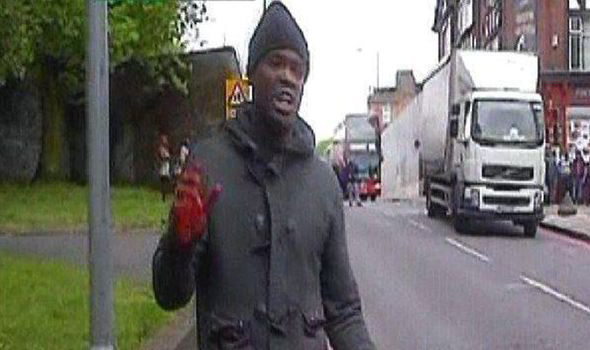
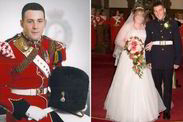
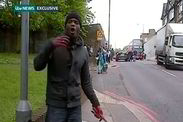
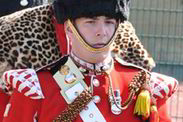







































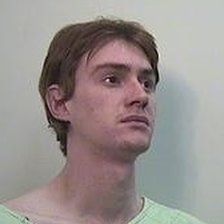

 First offender Kyle Montgomery will be sentenced next month for the killing
First offender Kyle Montgomery will be sentenced next month for the killing











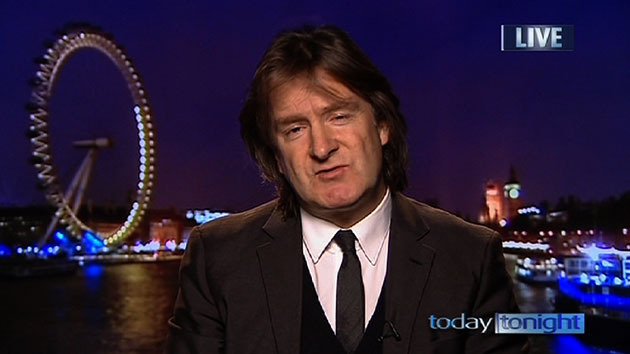






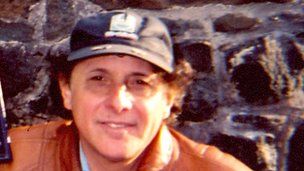
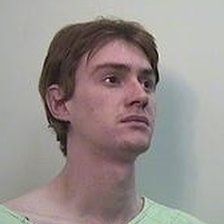
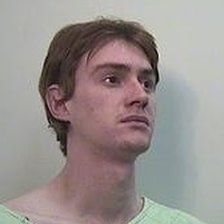
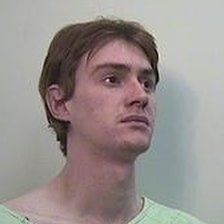
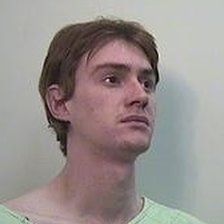
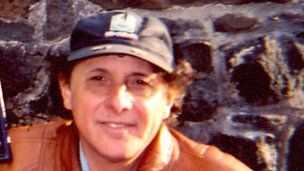
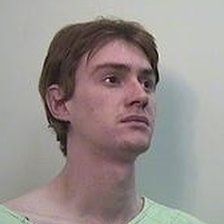
















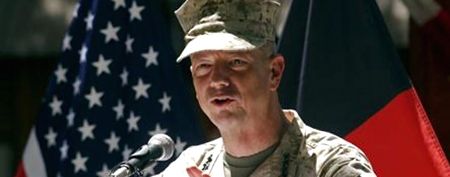




























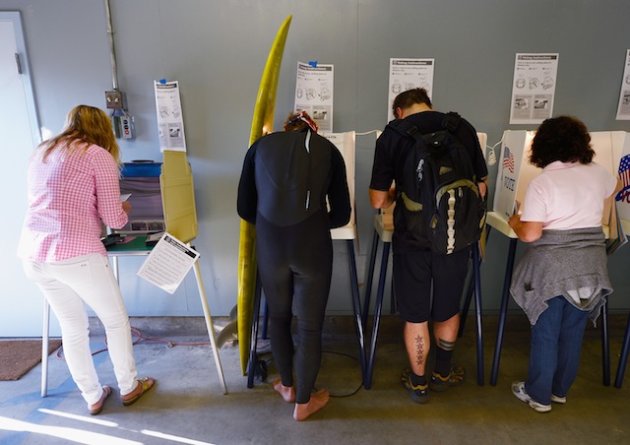

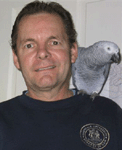



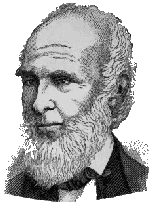
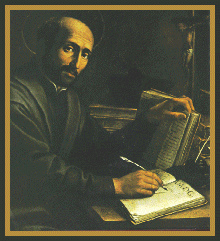



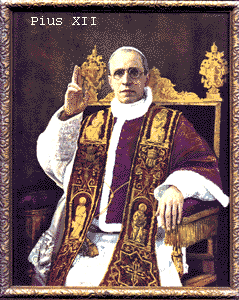









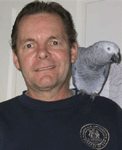 One question this Sunday is whether the Jesuits are an association of highly organized warrior priests? Another question is why has history covered important facts behind alleged Jesuit involvement in the assassination of Abraham Lincoln, as well as why did the U.S. government cut-off all diplomatic relations with the Vatican in 1867 as a result of its alleged connection with the murder of Lincoln?
One question this Sunday is whether the Jesuits are an association of highly organized warrior priests? Another question is why has history covered important facts behind alleged Jesuit involvement in the assassination of Abraham Lincoln, as well as why did the U.S. government cut-off all diplomatic relations with the Vatican in 1867 as a result of its alleged connection with the murder of Lincoln?
 THE strikes upon the World Trade Center and the Pentagon on September 11, 2001 marked a pivotal point in the evolution of the "experiment of popular government". What followed has been nothing short of a pronounced continuation of a religious war, which had its origins in the Middle Ages, using the armed forces of a compliant host nation or alliance of nations according to the wishes of the Papacy. The ultimate goal is the eventual re-location of this so-called "Chair of Peter" to Jerusalem in order to direct and control all the people of the earth and the complete destruction of anything not in accord with Her dictates. Chief among these ideals, which are hated by the Church of Rome, are freedom of conscience, freedom of religion, freedom of the press and freedom of association; in fact, every fundamental freedom on which the United States was founded.
THE strikes upon the World Trade Center and the Pentagon on September 11, 2001 marked a pivotal point in the evolution of the "experiment of popular government". What followed has been nothing short of a pronounced continuation of a religious war, which had its origins in the Middle Ages, using the armed forces of a compliant host nation or alliance of nations according to the wishes of the Papacy. The ultimate goal is the eventual re-location of this so-called "Chair of Peter" to Jerusalem in order to direct and control all the people of the earth and the complete destruction of anything not in accord with Her dictates. Chief among these ideals, which are hated by the Church of Rome, are freedom of conscience, freedom of religion, freedom of the press and freedom of association; in fact, every fundamental freedom on which the United States was founded.

 The next event was the death of Pope John Paul II. If anyone has doubts as to the political power the Roman Church has, these doubts were laid to rest as every national flag was lowered to half mast and every form of media all over North America, in the most worshipful manner bowed the knee, like those in Nebuchadnezzar's time and those in the days of the Caesars, to the man who claims to stand in the place of Almighty God. In this case a man who, while under Nazi occupation in Poland, vigorously helped to produce and sell 'Zyklon B' for chemical company I.G. Farben, a nerve gas which was used to kill those wholesale in the death camps of Europe. A man who, in spite of one of the world's greatest outbreaks of primarily homosexual pedophilia by Roman priests in recent memory, virtually swept the whole matter under the rug until he was finally forced to react by an outraged public. A man who presided over the Roman priesthood's led and encouraged genocide in Rwanda and the religious mass murders in the Balkans. A real godly man, n'est pas? Apparently every major political leader from around the world and representatives from every major religion thought so.
The next event was the death of Pope John Paul II. If anyone has doubts as to the political power the Roman Church has, these doubts were laid to rest as every national flag was lowered to half mast and every form of media all over North America, in the most worshipful manner bowed the knee, like those in Nebuchadnezzar's time and those in the days of the Caesars, to the man who claims to stand in the place of Almighty God. In this case a man who, while under Nazi occupation in Poland, vigorously helped to produce and sell 'Zyklon B' for chemical company I.G. Farben, a nerve gas which was used to kill those wholesale in the death camps of Europe. A man who, in spite of one of the world's greatest outbreaks of primarily homosexual pedophilia by Roman priests in recent memory, virtually swept the whole matter under the rug until he was finally forced to react by an outraged public. A man who presided over the Roman priesthood's led and encouraged genocide in Rwanda and the religious mass murders in the Balkans. A real godly man, n'est pas? Apparently every major political leader from around the world and representatives from every major religion thought so.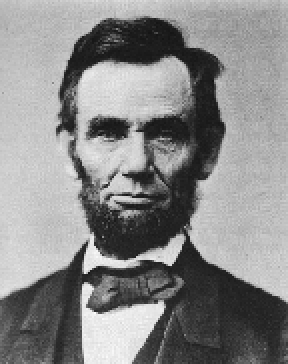 The Jesuits killed Lincoln and buried the evidence. But just as water seeks its own level, so does the truth eventually surface and make itself known. Deception and denial are only band-aids in the modern day world of intelligence, tooled by the Internet and other high tech investigative systems. Today anyone can become a good detective. If it had not been myself, someone else would have undertaken the task of doing the digging and piecing together the true story of President Lincoln's assassination.
The Jesuits killed Lincoln and buried the evidence. But just as water seeks its own level, so does the truth eventually surface and make itself known. Deception and denial are only band-aids in the modern day world of intelligence, tooled by the Internet and other high tech investigative systems. Today anyone can become a good detective. If it had not been myself, someone else would have undertaken the task of doing the digging and piecing together the true story of President Lincoln's assassination.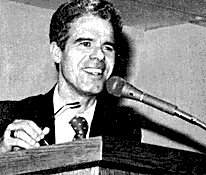








Those women were to brave for their own good, but I do admire their courage. I personally, unless armed would not be able to front this type of person. They killed the soldier but not touch women?